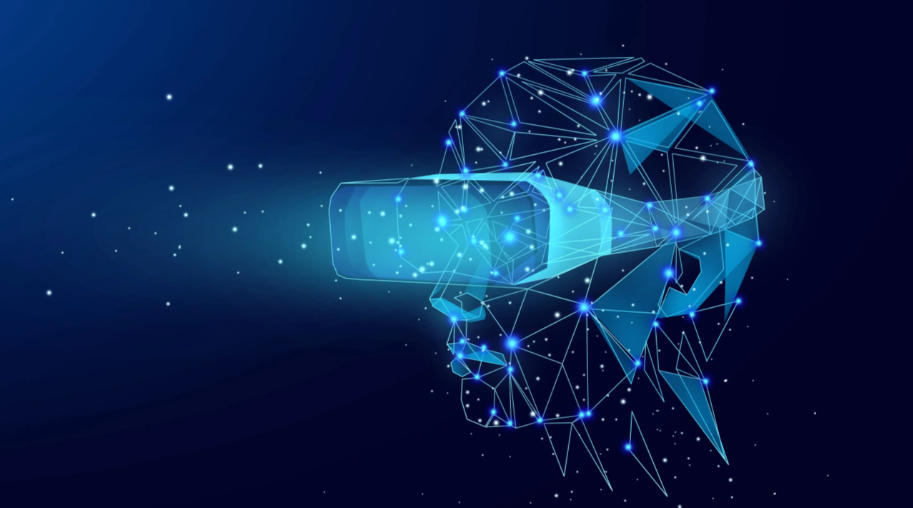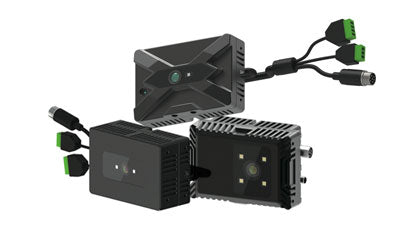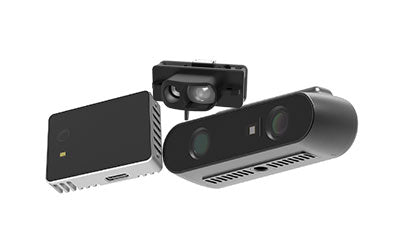Enhanced AR/VR Interaction with ToF Sensors: Depth & Gesture Control

How Can ToF Sensors Make AR/VR Experiences More Immersive and Accurate?
With the rapid advancement of AR/VR technology, users are demanding more immersive and interactive experiences. From hand gesture recognition to spatial positioning and virtual-physical interaction, traditional sensing solutions often suffer from high latency, limited precision, and environmental interference. The introduction of TOF (Time-of-Flight) Sensors, 3D ToF Camera Modules, and 3D Depth Sensors has revolutionized AR/VR devices, enabling faster, more accurate, and more immersive interaction.
What is AR and VR?
AR (Augmented Reality) and VR (Virtual Reality) are cutting-edge technologies that blend digital elements with human sensory experiences, widely applied in gaming, education, industry, healthcare, automotive, and smart devices.
-
AR (Augmented Reality):
AR enhances the real world by overlaying virtual information—such as images, text, and 3D models—on top of physical surroundings. Users can view and interact with virtual objects through smartphones or AR glasses. Typical applications include AR navigation, virtual try-on, and industrial assembly guidance. -
VR (Virtual Reality):
VR immerses users entirely in a computer-generated 3D environment. Using VR headsets and controllers, users can explore virtual worlds and interact with digital objects—such as in driving simulations, virtual meetings, or 3D training.
In short, AR adds virtual elements to the real world, while VR immerses users in a completely virtual world. With advancements in 3D Sensing Technology, Time of Flight (ToF) Sensors, Image Sensors, and AI algorithms, AR and VR are converging into MR (Mixed Reality), which pushes human-device interaction toward a more seamless and realistic experience.
1. AR/VR Development Trends and User Experience Challenges
As AR and VR technologies enter mainstream consumer markets—including smartphones, headsets, tablets, gaming consoles, and wearables—users are demanding more natural, responsive, and immersive interactions. However, current AR/VR systems still face major challenges:
-
Gesture Recognition Delay:
Traditional RGB cameras or inertial sensors often struggle with response speed when tracking rapid hand movements, leading to delayed or inaccurate gesture detection. This negatively impacts user immersion. By integrating 3D ToF Sensors or ToF 3D Depth Cameras, devices can achieve millisecond-level response time, significantly improving real-time performance. -
Inaccurate Spatial Mapping:
Precise spatial alignment is essential for AR/VR systems to overlay virtual objects accurately within physical environments. However, conventional 2D sensors lack the depth accuracy needed. 3D ToF Camera Modules and Time of Flight 3D Sensors can generate high-resolution depth maps, providing accurate spatial modeling and object placement, greatly enhancing immersion. -
Difficulty Recognizing Physical Boundaries:
In complex lighting or reflective environments, traditional sensors often fail to distinguish between real and virtual objects, increasing the risk of interaction errors. 3D ToF Modules use active infrared ranging to capture stable depth data—even under low light or reflective conditions—ensuring accurate boundary detection and safer interaction.
In addition, as AR/VR applications grow in complexity, systems must support multi-user collaboration, dynamic scene recognition, and real-time rendering. Through the integration of 3D Sensing Technology and edge computing, devices can improve depth accuracy, minimize latency, and provide developers with reliable spatial data for natural and responsive user experiences.
2. Role of ToF in Spatial Mapping, Gesture Recognition, and Boundary Detection
In AR/VR applications, Time of Flight (ToF) 3D Sensors and 3D ToF Modules emit infrared light to measure the distance between the sensor and objects. This allows devices to obtain accurate 3D depth information, which forms the foundation for realistic spatial interaction.
Real-Time Spatial Mapping
ToF sensors can produce high-resolution depth maps via 3D ToF Depth Cameras, enabling precise environmental modeling. With 3D Sensing Technology, devices can capture the structure of rooms, furniture, and obstacles in detail, accurately anchoring virtual elements to real-world spaces—for example, in AR navigation, interior design visualization, or training simulations.
Gesture Recognition Enhancement
By combining ToF depth sensing with AI algorithms, 3D ToF Camera Modules can detect subtle hand and finger movements in milliseconds. Compared with traditional RGB cameras, ToF offers higher tof sensor resolution, faster response, and greater robustness, making it ideal for games, virtual training, and industrial AR applications.
Accurate Physical-Virtual Boundary Detection
In dynamic or low-light environments, 3D ToF Modules deliver precise boundary recognition, ensuring that virtual elements align properly with the real world. This reduces interaction errors and improves reliability in gesture control, virtual button pressing, and collaborative VR sessions.
Consumer-Grade ToF Product Advantages
Leading solutions such as STMicroelectronics ToF Sensors, Infineon REAL3 ToF Sensors, and TI ToF Sensors provide outstanding tof sensor range, tof sensor distance, and low latency. Compact and power-efficient, these modules integrate easily into consumer devices, enabling high-quality 3D sensing applications in smartphones, AR glasses, and gaming devices.
3. ToF Sensor Applications in Consumer Devices
Time of Flight (ToF) Sensors have become essential components in modern smart devices, providing precision depth perception and real-time interaction for smartphones, AR/VR headsets, tablets, and gaming systems.
Smartphones
3D ToF Camera Modules are used in facial recognition, gesture control, and AR effects. With ToF 3D Depth Sensors, smartphones can achieve highly accurate face unlock, secure payments, and dynamic AR filters, even in challenging lighting conditions.
AR/VR Headsets
3D ToF Depth Cameras enable real-time environmental mapping, allowing headsets to accurately position virtual objects in physical spaces. This enhances natural interaction and multi-user collaboration in virtual meetings, simulations, and gaming environments.
Tablets and Gaming Devices
By capturing hand movements and environmental layouts, 3D ToF Modules deliver precise gesture-based control and spatial interaction. In gaming or education, ToF sensors combined with AI algorithms allow low-latency responses and complex gesture recognition for a truly immersive experience.
Technical Advantages
High-resolution, low-power ToF Sensors—such as STMicroelectronics ToF Sensors and Infineon REAL3—offer exceptional precision and efficiency. Their compact, modular 3D ToF Camera Modules integrate seamlessly with SoCs, supporting advanced tof sensor applications and enhancing the immersive quality of AR/VR environments.
In summary, ToF depth-sensing technology is redefining AR/VR interaction by providing precise 3D perception, faster gesture recognition, and accurate environmental mapping. It enhances user immersion, interactivity, and safety—ushering in a new era of intelligent, responsive, and realistic digital experiences.
4. Technical Challenges: Latency, Power Consumption, Accuracy, and Occlusion
Despite the clear advantages of ToF (Time of Flight) technology, it still faces several challenges in AR/VR scenarios:
-
Latency Issues: High-frame-rate depth capture combined with AI processing may introduce latency, requiring optimization of both the sensor and the computational platform.
-
Power Consumption Limitations: Mobile devices have limited battery capacity, so high-performance ToF sensors must maintain power efficiency.
-
Accuracy and Resolution: The seamless integration of virtual objects with real environments depends on tof sensor resolution and tof sensor distance, which directly affect user experience.
-
Occlusion and Complex Environments: Semi-transparent objects, strong lighting, or reflective surfaces can interfere with depth measurements, making multi-sensor fusion technologies necessary.
5. Recommendations for Creators: Enhancing ToF Experiences in AR/VR Content
To deliver a more immersive and natural user experience in AR/VR applications, creators can leverage Time of Flight (ToF) Sensors and 3D Sensing Technology to optimize interaction and spatial perception. Below are detailed recommendations:
1. Choose the Right ToF Module
In different AR/VR use cases, selecting an appropriate 3D ToF Module or 3D ToF Camera Module is crucial. Creators should consider tof sensor range, tof sensor distance, and tof sensor resolution based on their application needs:
-
Short-range interaction scenarios (e.g., gesture recognition, tabletop AR gaming) require high-resolution, low-latency high resolution ToF Sensors.
-
Large-space applications (e.g., indoor VR roaming or multi-user training) need long range ToF Sensors to ensure complete space mapping without blind spots.
-
Modular 3D ToF Modules are easier to integrate into headsets, AR glasses, and gaming devices while minimizing size and power consumption.
2. Combine with AI Algorithms
The real value of ToF depth data lies in intelligent processing. Creators can enhance performance using 3D Sensing Technology and deep learning algorithms to:
-
Improve Gesture Recognition: Capture subtle finger movements via ToF depth maps for intuitive gesture control.
-
Enhance Object Tracking: Track both user interactions and virtual objects in real time for higher responsiveness and precision.
-
Optimize Spatial Mapping: AI can correct errors caused by occlusion, reflection, or lighting changes, enabling precise virtual/physical boundary alignment.
3. Multi-Sensor Fusion
A single ToF sensor may struggle with occlusion or optical interference in complex environments. By combining ToF with RGB cameras and inertial measurement units (IMUs), creators can significantly improve data stability and interaction accuracy:
-
Maintain accurate depth perception even in low light, reflective, or occluded environments.
-
Enhance alignment between virtual and physical objects, reducing drift and interaction errors.
-
Support complex gesture and motion recognition for multi-user or fast-motion scenarios.
4. Power and Latency Optimization
AR/VR devices demand both real-time performance and long battery life. Creators should focus on optimizing tof sensor module sampling rates, algorithm efficiency, and data handling methods:
-
Adjust depth capture frame rates to balance real-time ToF depth sensing and power efficiency.
-
Use edge computing or lightweight AI algorithms for local depth processing to reduce transmission latency.
-
Adopt dynamic resolution or region-based scanning for complex environments to improve efficiency and reduce system load.
By carefully selecting ToF modules, leveraging AI algorithms, using multi-sensor fusion, and optimizing latency and power, AR/VR creators can deliver high-precision, low-latency, immersive experiences. With mature products like STMicroelectronics ToF Sensor, Infineon REAL3 ToF Sensor, and TI ToF Sensor, developers can fully harness the advantages of ToF technology in smartphones, AR/VR headsets, and tablets — bringing users a more natural, intuitive, and immersive virtual experience.
6. Future Trends: Toward 'Tactile–Spatial' Immersive Interaction
Future AR/VR experiences will go beyond visual immersion, evolving toward a tactile and spatially integrated interaction model. Time of Flight 3D Sensors, ToF 3D Depth Cameras, and 3D ToF Sensors will integrate deeply with haptic feedback, AI-driven interaction, and edge computing to achieve:
-
Tactile–Spatial Interaction Fusion: Virtual objects can detect physical boundaries, synchronizing gesture actions with tactile feedback.
-
Dynamic Environment Awareness: Real-time recognition of surroundings and moving objects enhances both safety and immersion.
-
Personalized Interaction Experiences: AI analyzes user behavior to optimize interaction response and virtual layout design.
With the rapid growth of the tof sensor market and the 3D sensing technology market, ToF integration in AR/VR devices will continue to advance—bringing users a more natural, realistic, and deeply immersive interactive experience.
-
Postado em
CS20P





